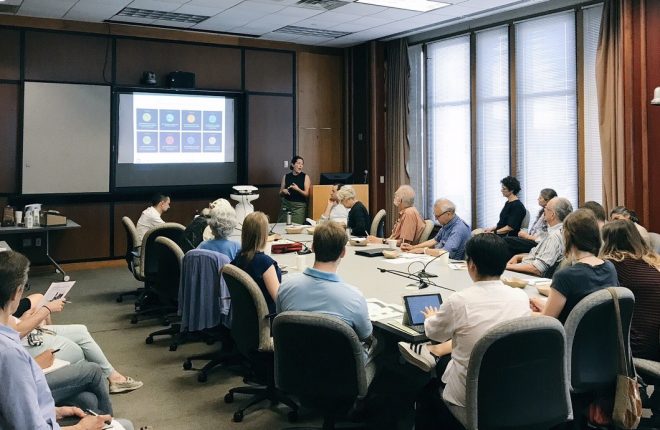As part of the update to Greenworks, Philadelphia’s sustainability plan, we set a long-term vision for a city where all Philadelphians efficiently use clean energy that they can afford. This work has become all the more critical in the wake of the Trump Administration’s decision to withdrawal from the Paris Climate Agreement and Mayor Kenney’s subsequent decision to commit our city to meeting a 100% clean energy goal as part of his long-term commitment to reduce carbon emissions 80 percent by 2050.
To understand how Philadelphians can work together toward these goals, we are developing a citywide energy vision (CEV) for Philadelphia’s buildings and industry (a separate transportation plan is forthcoming through the Office of Transportation and Infrastructure Systems). The CEV will highlight current and expected trends in our energy system and identify opportunities for the city, other government agencies, and residents and businesses to each lead on achieving our climate and energy goals. This post includes a quick update on the CEV process and opportunities for stakeholders to stay involved.
Vision Timeline

Since beginning the citywide energy vision development process last fall, OOS has conducted outreach via webinar, listening session, survey, and review presentations, while meeting with issue experts and advocacy groups. OOS is currently using this information in coordination with modeling completed by consultants to develop a draft Citywide Energy Vision framework, which will be released for public comment later this year.
How Will We Get There?
Meeting Philadelphia’s energy and carbon reduction goals will require work across all levels of government and throughout our community. OOS has grouped this work into five categories, which will form the basis of the CEV framework:
- Energy-Efficient Homes and Businesses: The Department of Energy estimates that 30% of energy in an average commercial building is wasted. Eliminating this waste in our homes and businesses will save money, improve indoor air quality and tenant comfort, and reduce our reliance on fossil fuel-generated energy.
- Clean Electricity Grid: Philadelphia’s buildings and industry use electricity generated through a regional grid that includes power plants from New Jersey and Delaware to West Virginia and Ohio. To achieve our goal of reducing carbon emissions 80 percent by 2050, our regional electricity grid must shift from reliance on coal and natural gas toward clean generation sources.
- Citywide Solar: As part of the transition toward a cleaner grid, Philadelphia can do its part by installing solar generation on rooftops and other surfaces throughout the city. Like energy efficiency, this strategy can save residents money while spurring economic growth and moving us toward a clean energy future.
- Low-Carbon Thermal Energy: Most buildings in Philadelphia are currently heated by oil, on-site gas furnaces, or the Veolia steam loop (which uses natural gas to generate heat and electricity). Emerging technologies like microgrids, high-efficiency heat pumps, and biogas can reduce our reliance on fossil fuel energy for heating or domestic hot water.
- Low-Carbon Economy: Factories, industrial processes, and refineries are a major source of carbon emission within our city. OOS is committed to working with all stakeholders to understand how we can move together toward a just, healthy, low-carbon economy that works for all our residents.
Stay Involved
We’ll be continuing to refine and build on this framework throughout the summer. Want to stay involved? Here are a few ways to be part of the process:
- Follow our blog: We’ll continue to publish posts on the citywide energy vision throughout the summer.
- Watch the presentation: We filmed our latest engagement session for anyone unable to attend the event in person. Please share if you know anyone that would be interested.
- Send us an email: Ideas on where you want to see this work go next? Please continue to share your thoughts and ideas with us via sustainability@phila.gov.
- Comment on the vision: We’ll publish a draft of the CEV this fall for public comment – more details to come soon.
- Take action: There are steps you can take today to move Philadelphia toward a cleaner energy future. You can learn more about how individuals, communities, and institutions can take action in our Greenworks on the Ground checklists, and find even more ways to participate through Philadelphia’s Environmental Action Guide.

